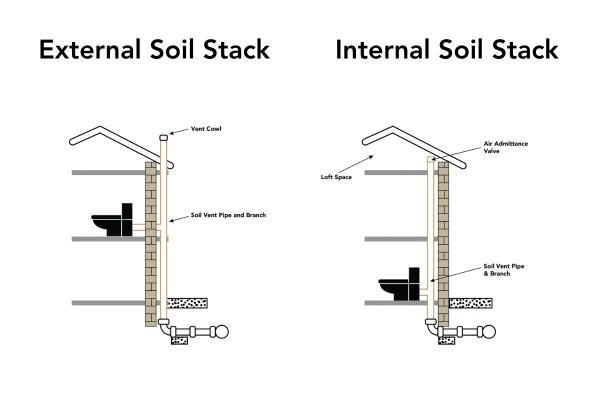Several core signs show there could be a problem with your soil stack. If your sinks or toilets are draining slowly, then that could be a sign of a blockage in your soil and waste pipes. If, on the other hand, there is water bursting from seams or leaking water from the soil stack itself, then there could be a more significant problem.
If you suspect that there could be a problem with the soil stack, contact one of our local specialists to discuss your needs today on 0800 66 88 00 or find your local Metro Rod here.















